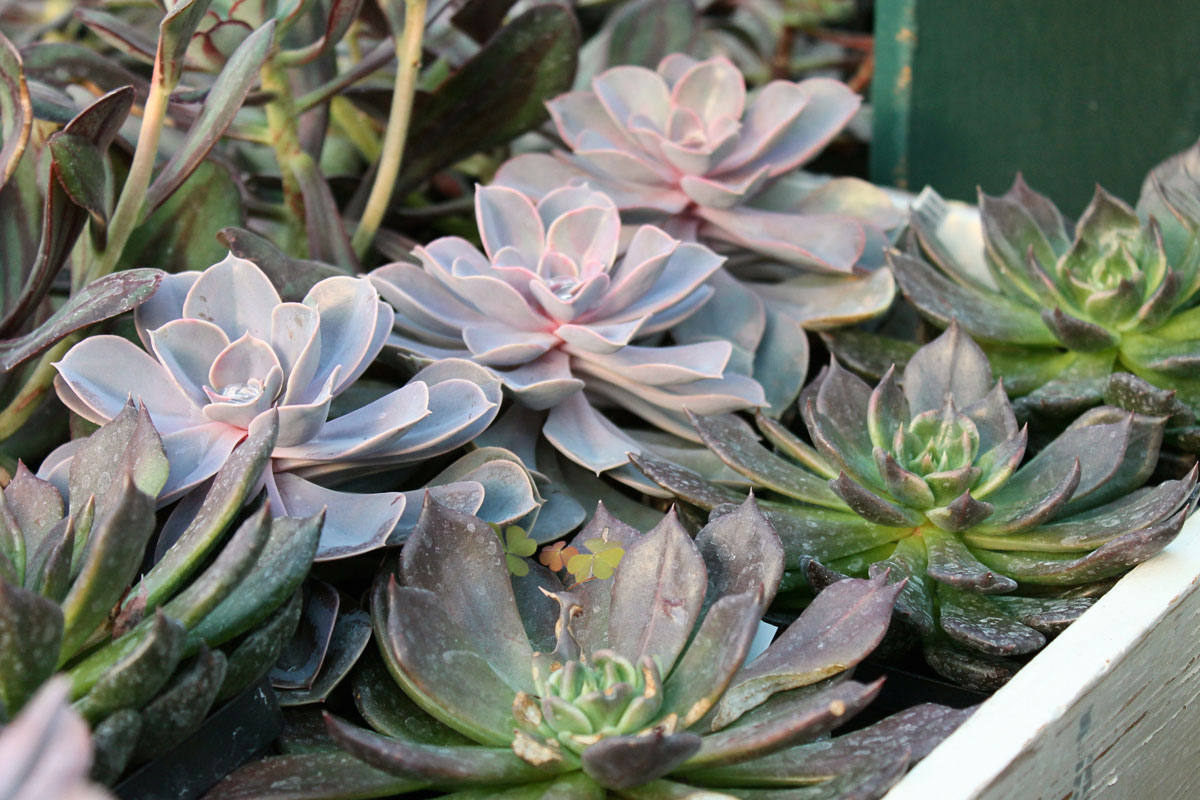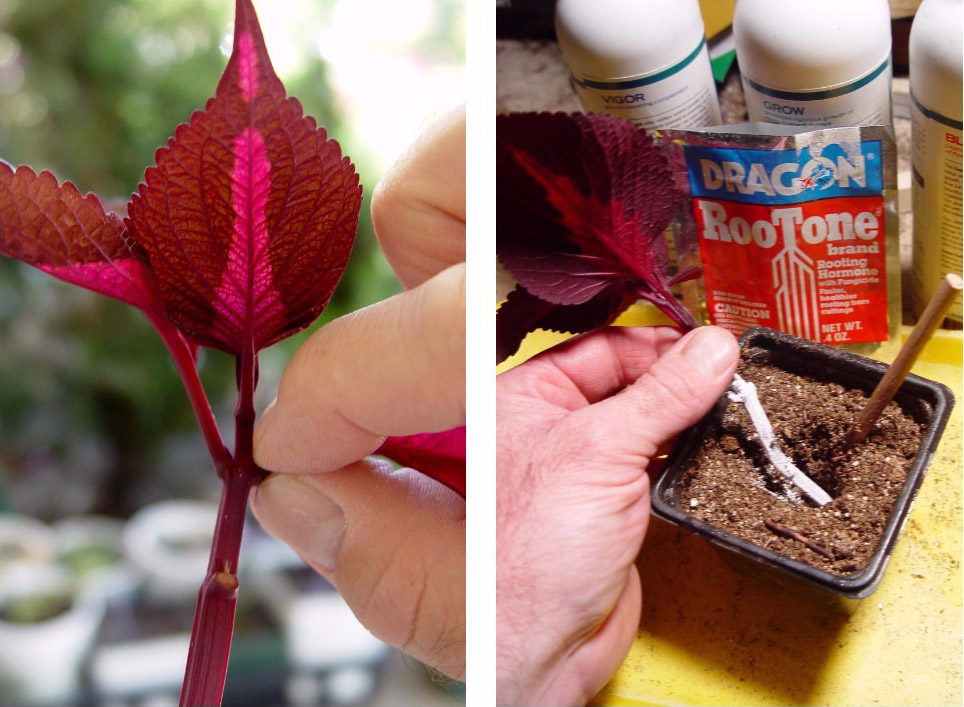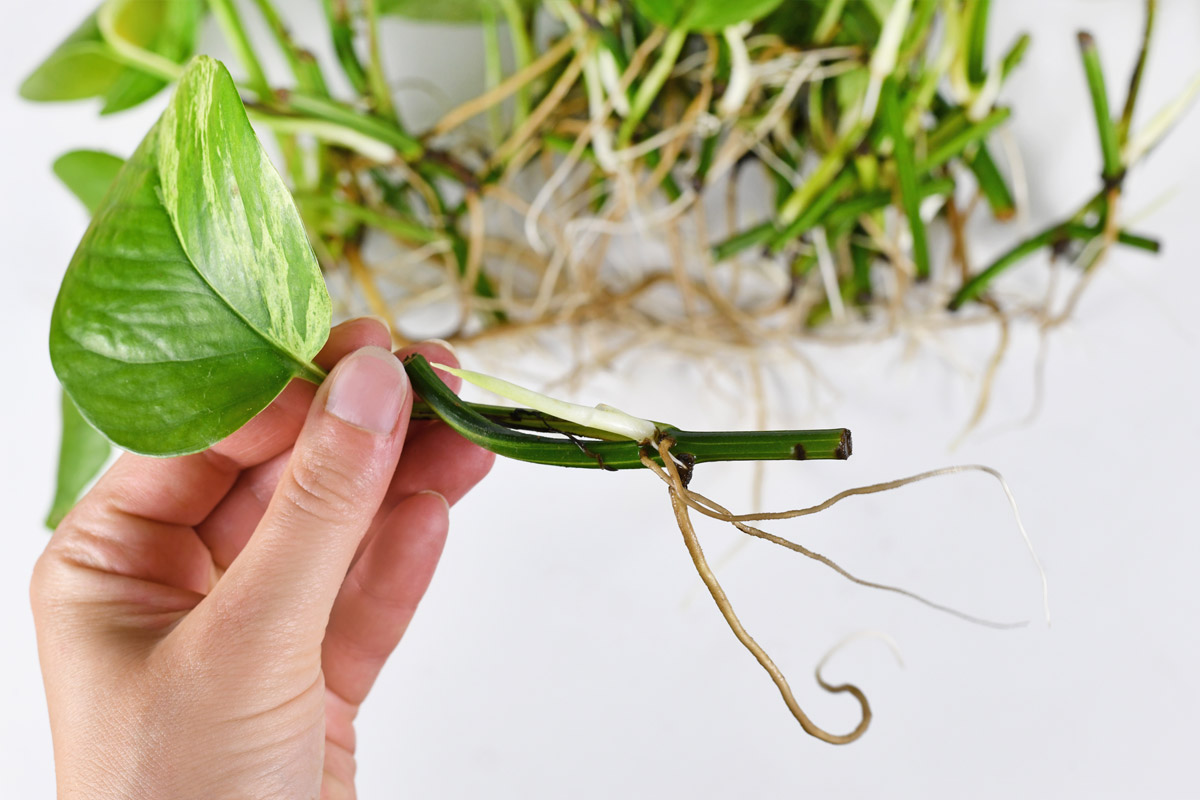4 Houseplants Anyone Can Grow
These low-maintenance houseplants are great for anyone who wants to learn more about gardening and caring for plants.
A money-saving way to grow your houseplant collection is by creating rooted “baby plants” from the parts of existing plants.
Many houseplants can be divided or will grow roots from cuttings, resulting in free new plants.
These propagation techniques, commonly used by commercial greenhouse growers, are easy to do at home.
Home gardeners can exchange new plant divisions and cuttings to grow their collection of houseplants. Just ensure that you are only propagating plants that are not patented or trademarked (those without specific variety names).
An ideal time for propagating most houseplants is anytime from mid-winter through when new growth kicks into gear in spring.

These echiveria pups can be divided to create new plants. Photo courtesy G. Weigel.
Just as outdoor perennial plants can be dug and split into pieces when the clumps are getting big, many houseplants can be divided the same way.
The best choices are species with expanding sections that already have roots growing under them. These are plant parts known as "offsets," "pups," or "divisions."
Examples include aloe, air plants, agave, anthurium, bromeliads, colocasia and alocasia (elephant ears), hens and chicks, echeveria, lithops (“living stones”), pilea, spider plants, snake plants, and yucca.
To create new plants out of these, dig up the mother plant, separate the rooted offsets from the perimeter, and replant these mini-plants in fresh potting mix. Keep the new plants damp but never wet to the point of sogginess.
Some houseplants grow in expanding single clumps rather than producing perimeter offsets. You can pull apart or even cut these plants into fist-size pieces, then pot them to make new young plants.
Examples of these include African violet, bird of paradise, calathea, cast iron plant, Chinese evergreen, ferns, jade plant, peace lily, palms, orchids, philodendron, moses in a boat, and ZZ plants.
This kind of root division is a good alternative to stepping up into bigger pots by “shrinking down” the mother plant, allowing you to keep using one of the divisions in the same-sized pot. You can then plant the other divisions in clean nursery pots and give them away as gifts if you don't want more than one.

Dip the cut ends of cuttings in powdered rooting hormone before sticking them in the potting mix. G. Weigel.
The second method is propagating with branch or stem cuttings.
Make cuts off the branch tips (four to six inches is plenty) with a sharp, clean tool, such as shears, snips, or an X-Acto knife. Clean your blades after each cut with an alcohol wipe to eliminate passing along disease.
Be sure to take cuttings only from healthy plants, not stems that are yellowing or showing signs of disease or stunted growth.
Pinch off the lower sets of leaves, leaving only one or two sets at the very top. Then stick the lower half to two-thirds of the cutting into dampened potting mix.
Powdered rooting hormones are available at most garden centers or online which can help encourage rooting. Dip the cut ends in the powder before sticking them in the potting mix.
In time, new roots will grow from the cut end and/or the nodes (the points where you pinched off the leaves).
Keep the potting mix consistently damp, and set the cuttings in bright but indirect light.

New roots growing from the nodes of a pothos plant cutting. Firn / iStock / Getty Images Plus
Plants that root well from cuttings include arrowhead, Chinese evergreen, dieffenbachia, hoyas, monstera, peperomia, pothos, philodendron, schefflera, spider plant, and tradescantia.
Some houseplants with woody stems, like rubber trees, dracaena, croton, and aralia, can be easily grown from cuttings.
The best success with woodier cuttings usually comes from the tips of younger growth as opposed to the thicker, tougher, older wood farther inward on a branch.
Some cuttings even root well in a glass or clear jar of room-temperature water. These include arrowhead, coleus, monstera, pothos, and tradescantia.
You can remove the rooted cuttings from the water and plant them in potting mix once they have grown to about an inch in length.
Patience is a virtue when starting cuttings. While some cuttings can start rooting in a week or two, others can take as long as two months.
Don’t give up until you see the cuttings wilt, brown, or die back. Even then, give them a tug and inspect the cut end to make sure the cutting hasn’t rooted.
You have little to lose for cuttings that don’t “take,” other than the time invested. But for every one that does root, you have a free plant.
Learn more about caring for houseplants with these articles: